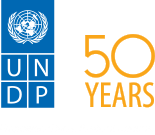Namibia Poverty Mapping and the Namibia Index on Multiple Deprivation reports launch
 Honourable Tom Alweendo, Minister of Economic Planning and Director General of the National Planning Commission and Honourable Zephaniah Kameeta, Minister of the newly formed Ministry of Poverty Eradication and Social Welfare launching the reports
Honourable Tom Alweendo, Minister of Economic Planning and Director General of the National Planning Commission and Honourable Zephaniah Kameeta, Minister of the newly formed Ministry of Poverty Eradication and Social Welfare launching the reports
23 April 2015, The Government of the Republic of Namibia in partnership with UNDP launched the Namibia Poverty Mapping and the Namibia Index on Multiple Deprivation reports.
These reports were launched jointly by the Honourable Tom Alweendo, Minister of Economic Planning and Director General of the National Planning Commission and Honourable Zephaniah Kameeta, Minister of the newly formed Ministry of Poverty Eradication and Social Welfare. Unlike earlier analyses of poverty in Namibia, the Namibia Poverty Mapping report provides a detailed analysis of spatial distribution of and trends in poverty headcount at regional and constituency levels using a combination of the 2003/04 and 2009/10 Namibia Household Income and Expenditure Surveys; and the 2001 and 2011 Namibia Population and Housing census data.
The second report on Namibia Index of Multiple Deprivation (NIMD), using data and information from the 2001 and 2011 Namibia Population and Housing Censuses, profiles deprivation in material, employment, health, education and living environment domains at regional, constituency and small area levels (areas of approximately 1000 people only) as at the 2011 timeline and changes over the 2001 -2011 period. The NIMD report thus provides a more fine grained analysis of deprivation and importantly, identifies pockets of deprivation even within the constituencies.
Among the 20 most education deprived constituencies in 2011, the largest increase in education deprivation was recorded in Otjinene in Omaheke Region with a 16.4 percent increase, followed by Epukiro in the same region with 14.2 percent, Omatako in Otjozondjupa Region with 9.3 percent and Daures in Erongo Region with 8.3 percentage points.
According to the report the best performing constituencies, in terms of change in NIMD ranking over 2001 to 2011, reflecting decreasing relative deprivation, were Onayena and Oniipa constituencies in Oshikoto Region followed by Ongenga in Ohangwena Region and Okahao and Tsandi constituencies in Omusati Region.
The percentage of people living in poverty was 26.9 in 2011, a reduction of 11 percent from 37.9 in 2001. However, this level of poverty coupled with an unemployment rate of 29.9 percent and HIV prevalence of 16.9 percent, a large portion of the Namibian population remains vulnerable.








